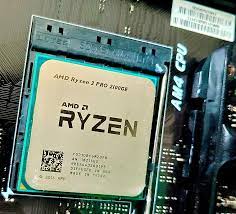Advancements in AI Chips and the Impact of China’s Restrictions

Introduction
The world of artificial intelligence is evolving at an unprecedented pace, and the heart of AI-driven devices lies in their semiconductor chips. These silicon powerhouses are responsible for enabling the complex calculations and deep learning algorithms that fuel AI technologies.
The Evolution of AI Chips
AI chips, also known as artificial intelligence processing units (AIPUs), have witnessed remarkable progress in recent years. They are specialized hardware components designed to accelerate AI workloads, such as machine learning, computer vision, and natural language processing. The primary types of AI chips include:
1. Central Processing Units (CPUs)
CPUs are the general-purpose processors found in most computing devices. While they can handle a wide range of tasks, they are not optimized for AI-specific workloads.
2. Graphics Processing Units (GPUs)
GPUs, originally developed for rendering graphics in video games, have become indispensable in AI due to their parallel processing capabilities. They excel at handling matrix operations commonly used in deep learning.
3. Field-Programmable Gate Arrays (FPGAs)
FPGAs offer flexibility as they can be reconfigured for specific AI tasks. This makes them suitable for a wide array of applications, from autonomous vehicles to data centers.
4. Application-Specific Integrated Circuits (ASICs)
ASICs are custom-designed chips specifically optimized for AI workloads. They provide unmatched performance but are expensive to develop and manufacture.
China’s Impact on the AI Chip Industry
China has been a significant player in the global semiconductor industry. However, in recent years, geopolitical tensions and concerns about national security have led to export restrictions on AI chips. These restrictions have several consequences:
1. Global Supply Chain Disruptions
China is a major supplier of various electronic components, including AI chips. Export restrictions have disrupted the global supply chain, leading to shortages and increased costs for manufacturers worldwide.
2. Technological Independence
The restrictions have pushed other nations to invest more heavily in domestic semiconductor production, aiming to reduce dependence on Chinese suppliers. This drive for technological independence is spurring innovation and competition in the AI chip market.
3. Impact on AI Development
AI development has been impacted due to the constraints on chip availability. Researchers and companies are facing challenges in acquiring the necessary hardware for their projects, slowing down progress in AI research.
The Path Forward
As the AI chip industry faces these challenges, it is essential for stakeholders to adapt and innovate.
1. Diversification of Suppliers
To mitigate supply chain risks, companies are diversifying their chip suppliers. This ensures a more stable and secure source of AI chips.
2. Investment in Research and Development
Investing in R&D is crucial for developing cutting-edge AI chips. Companies, universities, and governments are allocating resources to push the boundaries of chip technology.
3. Collaboration and Partnerships
Collaboration between nations, tech companies, and research institutions is essential for overcoming the challenges posed by export restrictions. International cooperation can foster technological progress.
In conclusion, the landscape of AI chips is evolving rapidly, with China’s export restrictions serving as a significant catalyst for change. As the world navigates these challenges, adaptation and innovation are critical to ensuring that the AI industry continues to thrive.










